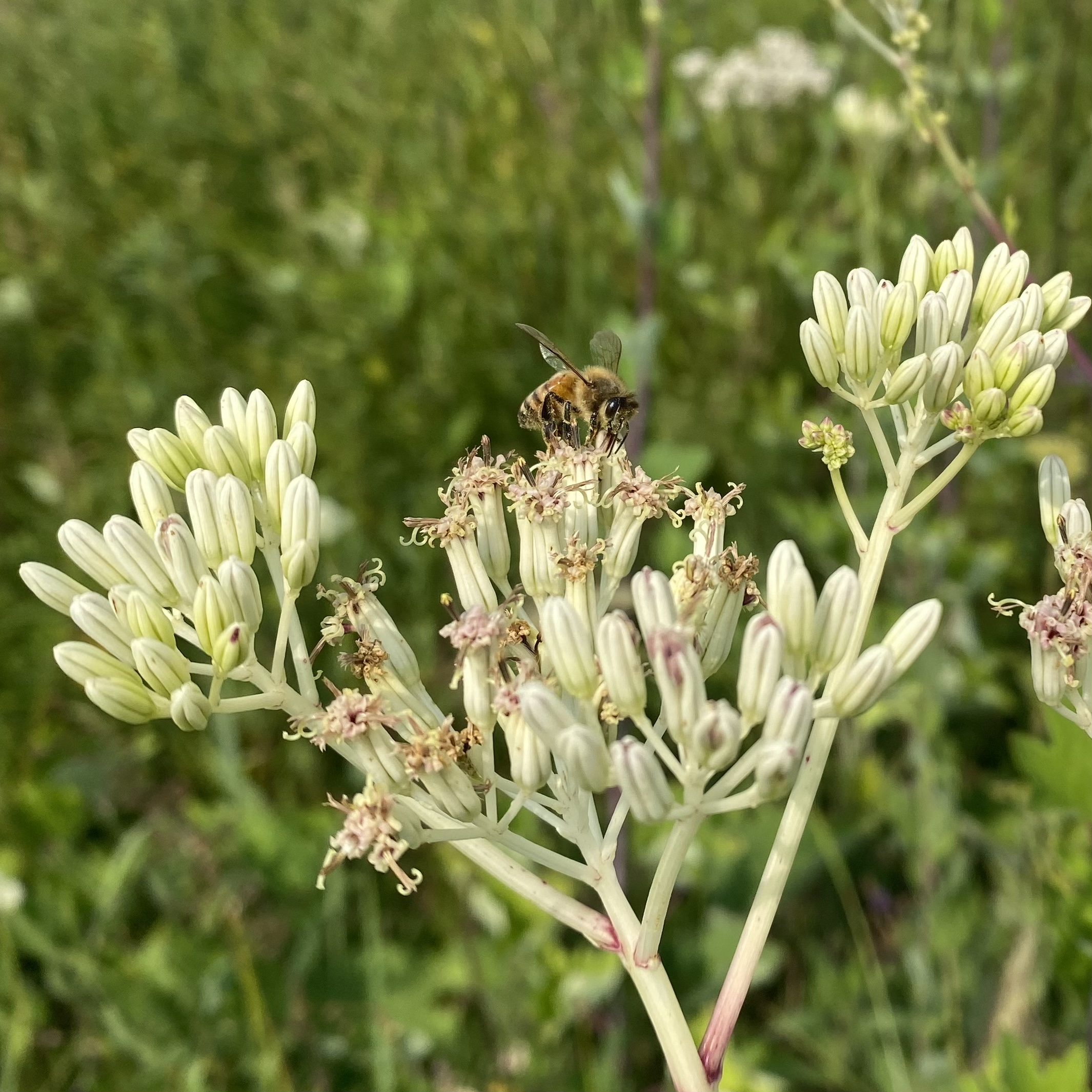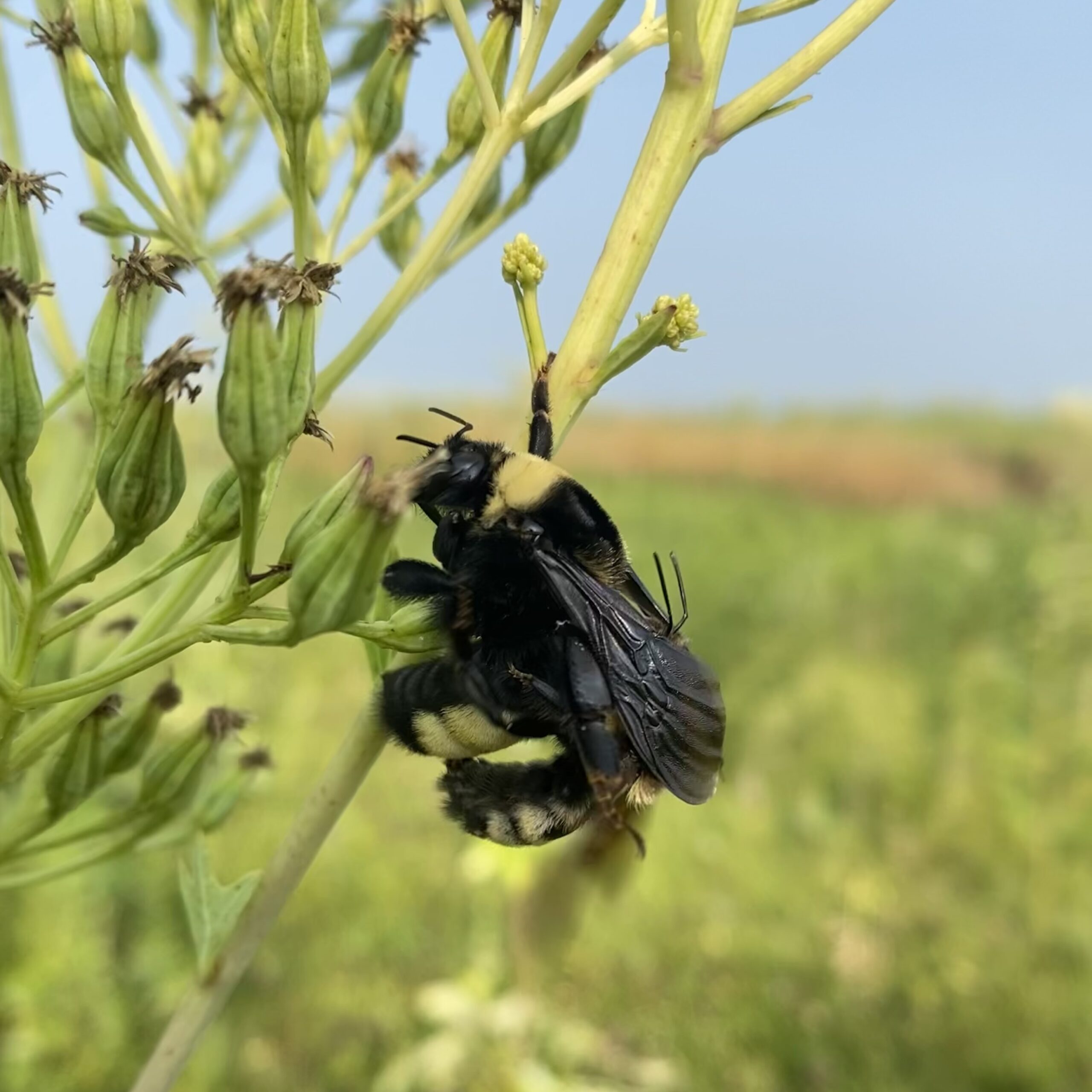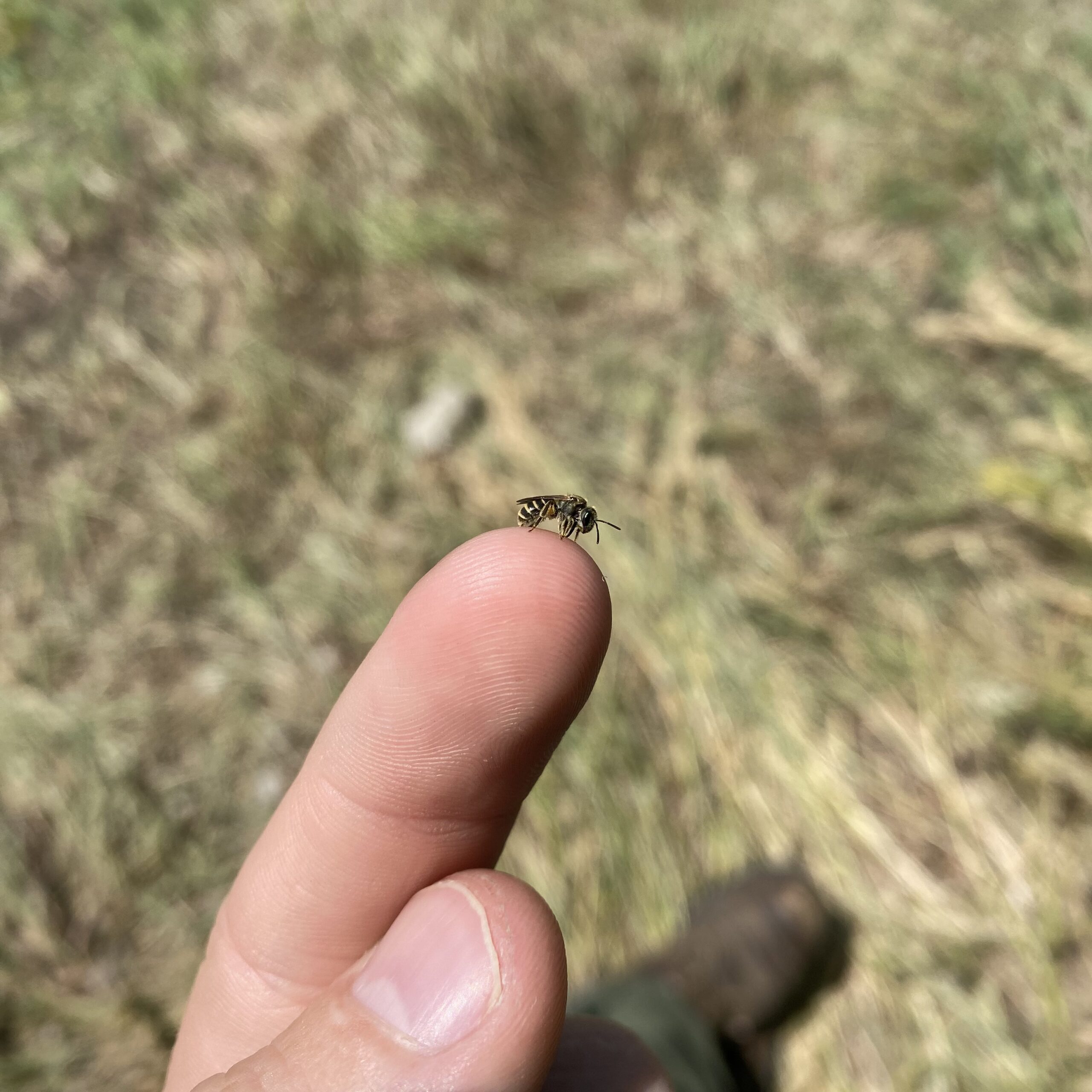Summer is the height of the field season at Midewin National Tallgrass Prairie, making it time for annual cover board surveys, robel pole monitoring, and floristic quality assessments. While walking our transects, it became increasingly clear that we were not alone on the prairie, as evidenced by an ever-abundance of fresh buffalo paddies often discovered already beneath your boot.
As we approached, the bison (Bison bison) were quick to greet us — eager to use the grill of our truck as a scratching post. Weighing in at nearly a ton and standing over six feet tall, Richard is Midewin’s largest bison. And although he may sire the most calves each year, he is far from in-charge. Rather, the herd is led by a matriarch who decides when and where the group grazes.
Although Midewin hosts a growing herd on its prairie restorations today, bison were extirpated from the state during the 1800s by Euro-American settlers. With them, these homesteaders brought Old World agricultural species such as horses, cattle, and honey bees.
Early American author and diplomat Washington Irving documented his surprise of the westward spread of the European Honey Bee (Apis mellifera) in 1832, writing: “The Indians consider them the harbinger of the white man, as the buffalo is of the red man; and say that, in proportion as the bee advances, the Indian and buffalo retire.”

When most people think of bees, they imagine hives constructed from wax which house tens of thousands of workers, making honey to feed their colony during the winter months. Most of these characteristics, however, are only true for the non-native Honey Bee. Native bees, on the other hand, live incredibly diverse lifestyles.
Bumble Bees (Bombus spp.), for example, live in seasonal colonies typically composed of a few hundred individuals. Young queens mate during the late summer and fall before hibernating throughout the winter, when the rest of the colony dies. Come spring, they will emerge from the soil and start collecting nectar and pollen to build colonies of their own.

Other bees, such as members of the family Halictidae, may be flexibly social. When floral resources are abundant, individuals of a species may live communally or even form colonies. During times of dearth, however, that same species may live solitarily; stockpiling a subterranean chamber or hollow plant stem with pollen, nectar, and eggs by herself before sealing it shut and dying soon after.
Whether encountering bison or bees at Midewin, days spent working at one of the nation’s few federally protected grasslands are full of reminders for the need to protect the residents of the prairie — both big and small.

Dade Bradley
Midewin National Tallgrass Prairie
